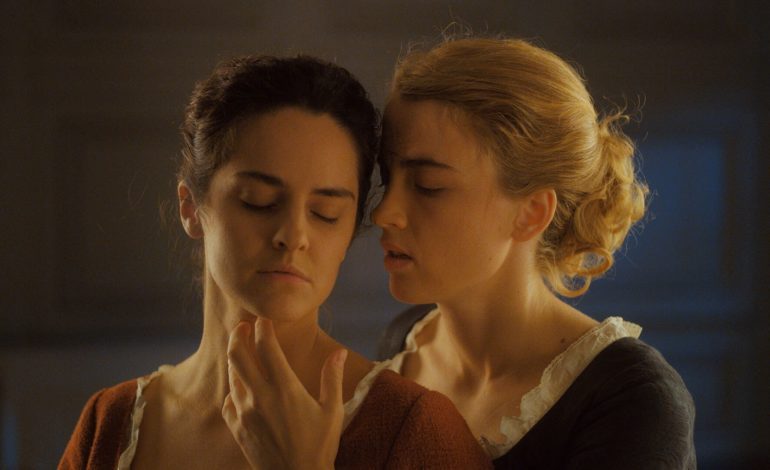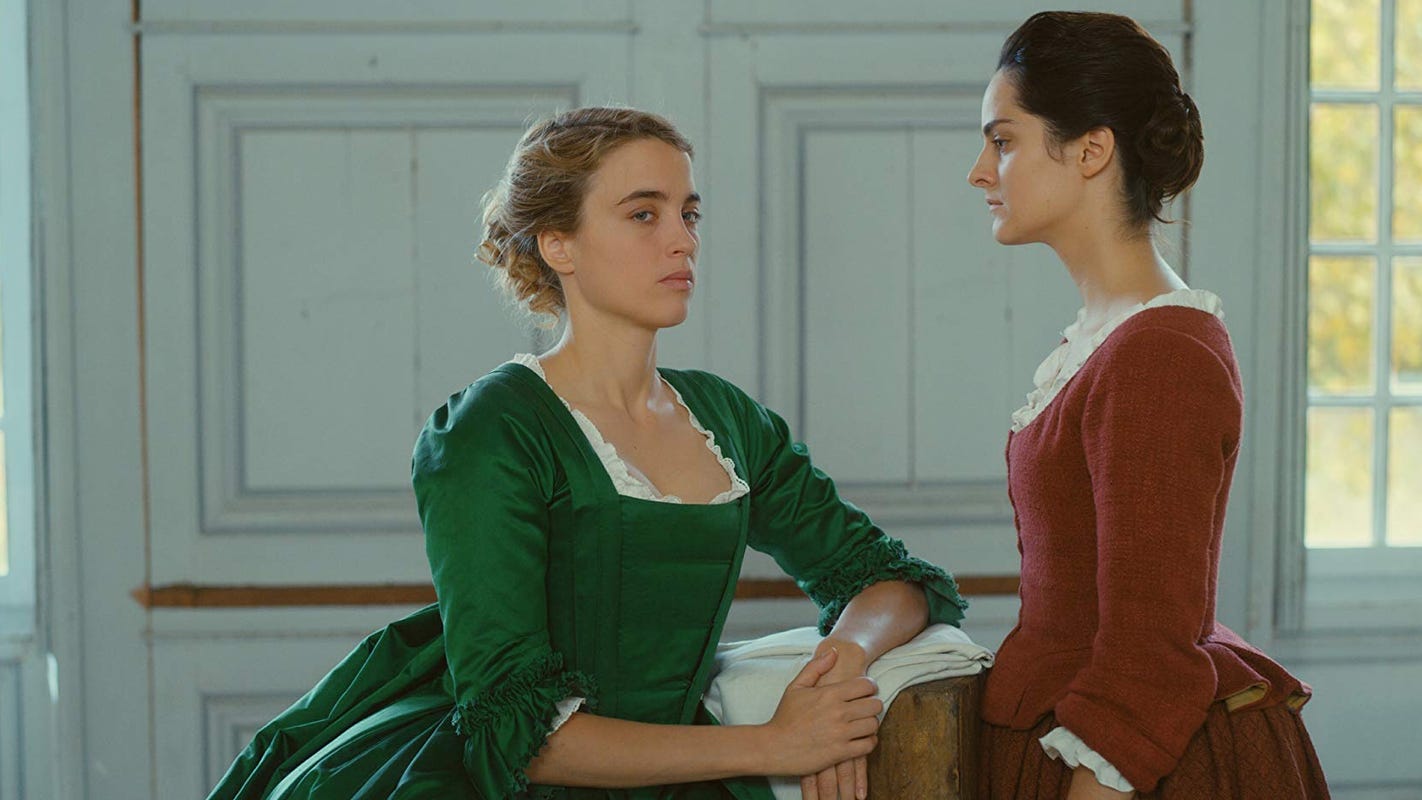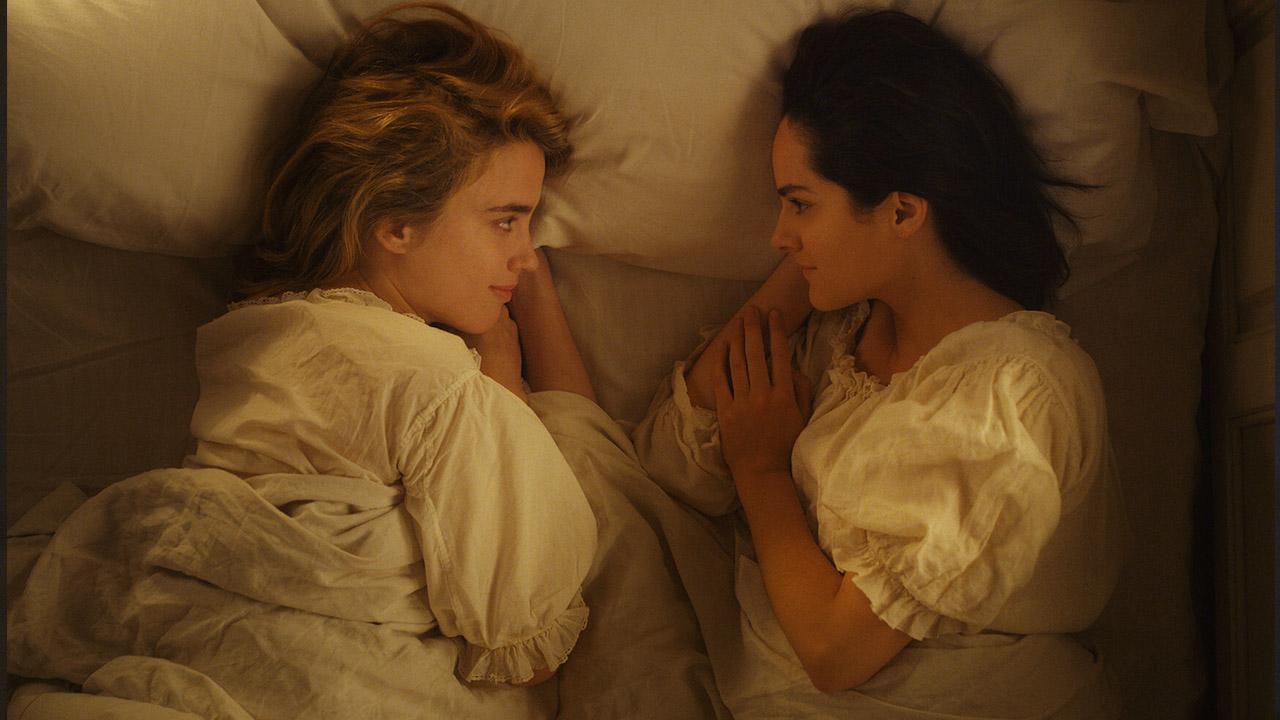

Portrait of a Lady on Fire, a French film and two-time Cannes winner in 2019, recently came to U.S. theaters and brought with it a refreshing dose of realism and beauty. With a fairly simple plot and minimalist mise-en-scene, the film and its characters construct a narrative heavily dependent on realism which is complimented by its accurate portrayal queer romance.
The film revolves around Marianne, a gifted painter, and her voyage to an island in order to paint the daughter of the lady of the house, Heloise. The drawback of Marianne’s task is the Heloise refuses to pose for a portrait as a protest of her marriage to a nobility from Milan. Disguised as her assigned keeper, Marianne is forced to gather bits and pieces of Heloise’s physicality on the guided walks she takes her on. Marianne quickly forms a bond with Heloise through their walks along the bluffs and the island shoreline. Marianne also forms a friendship with the maid of the house, Sophie, a teenage girl who ends up enlisting the two older women to help her induce a miscarriage while the lady of the house, Heloise’s mother, is gone for a weekend. Throughout all of their time together, it grows more and more obvious that the relationship between Heloise and Marianne is more than the bond between a painter and subject, and more than “just friends.”
Portrait’s plot, along with its general premise, is remarkably similar to that of The Handmaiden, a South Korean period film also about two women falling in love. Similar to Portrait of a Lady on Fire, The Handmaiden revolves around the love formed between a member of the upper class and a hired worker, whose love is forbidden not only because of historically mandated heterosexuality, but also for the demarcation in class between the two lovers. The Handmaiden’s plot is much more complex, with deception and politics taking center stage in the queer love story and with the total screen time running nearly three hours. Portrait of a Lady on Fire takes a much more simplistic approach, which adds an understated depth to both its characters and the quality of the relationship that the film depicts.
As a period piece set in the late eighteenth century, the film embodies an air of minimalism that functions not only as an aspect of the shot structure, but of the narrative itself. The most prominent shots used here are close-ups, which frame either Marianne, Heloise, or the couple together in such a way that mimics portraiture. This repetitive use of close-ups distinguishes both lovers from the artists’ gaze and is a subtle stylistic choice that feels unique, yet still flows with the director’s minimalist choices.

Many of the shots of Marianne and Heloise’s budding romance are also marked by this sense of minimalism, which is precisely what makes their romance feel so realistic. The film seems to capture the delicate nuances of falling in love, especially the coded nuances experienced in the formation of queer relationships. Marianne and Heloise communicate through the intensity of a glance, the cautious movements of fingers, and the secret language of a smile. It was these captured subtleties which determine the queer relationship that this narrative follows so realistically; gay women in eighteenth century Europe surely had to suppress their romance in these muted ways, just as many still do now. There are certain ways in which queer people register and produce such small exchanges, ways that have been learned throughout centuries of systemic oppression and violence, that make these nuances of love specific to the queer experience.
This all being said, the relationship between Marianne and Heloise is portrayed as a true romance, something which many queer films starring a Sapphic couple fail to accomplish. In the majority of other films involving lesbian characters, sexuality is highlighted over any other aspect of the relationship (see Blue is the Warmest Color). In Portrait of a Lady on Fire, neither Marianne or Heloise are made into sexual objects and, although sex scenes and naked bodies are depicted, the shots involving sex and nudity are not exploitative or male-catered. None of the scenes showing the physical side of their relationship seemed to have the male spectator in mind, and rather worked to portray two women in love, rather than two women pornographically having sex.


From a feminist perspective, Portrait of a Lady on Fire also shines. The plot revolves around a gay couple but also solely includes female characters which, for a period piece, is largely uncommon. This historical focus on the feminine is empowering in that it gives the female characters much more agency on screen than women typically do in historical representations. Sophie, the teenage maid, is supported through her abortion by other women and chooses with autonomy to get rid of her pregnancy. The man of the house is never shown, and Marianne is contracted and paid by Heloise’s mother. Heloise is never even shown with her husband, despite their tragically enforced nuptials and the large role his existence plays in the tumultuousness of the women’s relationship.
All in all, Portrait of a Lady on Fire depicts a queer romance that truly felt like it was crafted for a queer viewer. It forwent the typical hyper-sexual conventions of lesbian relationships and depicted the buildup of Marianne and Heloise’s love in a realistically subtle sense. The film has a minimalistic way of empowering the feminine and queering what agency truly meant for women who were alive during oppressive stretches of history.
